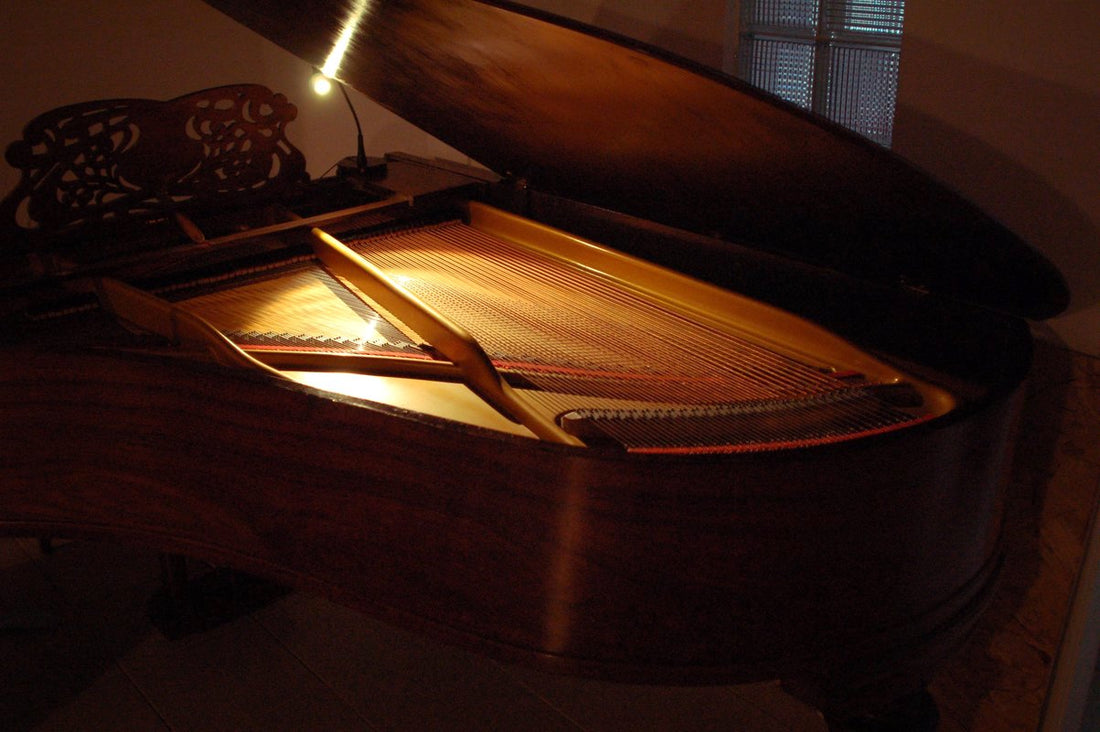In Part One, J.I. Agnew began his search for the perfect piano for recording. He noted that finding a piano that would sound as much like real life in recordings was a different task than finding one that simply sounded good. After much searching, J.I. came upon a 1904 John Broadwood & Sons grand piano…
The piano was discovered in a barn in England last December. However, the new studio facility I am currently working on is located at the other end of Europe, and to make matters worse, the Brexit was approaching fast. At the end of 2020, the United Kingdom would no longer be part of the European Union. Within the EU, goods can be purchased in any country and shipped to any other country with no need for import/export procedures or costs incurred.
At least in theory it works that way, but in practice it is not always as simple as that. The Old World has certainly retained some of its medieval charms, evident in much of its architecture but especially in its administrative systems, which are often nightmarishly complicated, inefficient and worst of all, lend themselves to various interpretations, depending on the interests involved. The import and export procedures mandated in the Brexit deal document (all 2,000 pages of it!) have been taking this to a whole new level. Imagine a combination of the Roman Empire and the Soviet Union, but carried unchanged into the future, in the midst of a pandemic.

The large shipping crate for the piano.
It was clear that the piano would need to leave the UK at once and arrive at its destination in the EU before the new Brexit rules would come into force at the end of the year. If it didn’t, the following would happen:
First, the UK authorities would seize the piano at the port of exit, as it would no longer be legal to export objects of cultural heritage, such as works of art, antiques and anything else that could plausibly fall under this category, without first having applied for official permission (which may of course be refused) at considerable expense.
Second, the EU authorities would confiscate the piano because it has ivory keys, a material which is prohibited for import into the EU, but was commonly used on 19th century pianos.
Third, the EU authorities would seize the piano because it does not have a barcode, product code, type approval, (a document that all commercial products of a technical nature must come with, which is issued upon inspection by the relevant authorities to verify that it conforms to the applicable safety and performance standards), or any of the several documents that 120-year-old pianos simply did not come with.
Fourth, the EU authorities would put together a committee of “experts” to determine the real value of the piano. Even if they would conclude that the piano was only worth its weight as firewood, the bill to pay for the committee itself would come up to around USD $25,000. Ask me how I know…

The Inside of J.I.’s piano.
Yes, this is one of the many strange things I’ve had to deal with in the course of trying to run my business. But most probably, the committee would establish that the piano is a museum piece, worth considerably more than anyone would ever be willing to actually pay for it, and the customs officials would base their calculations on that value. If you disagree, they get to keep it. Of course, over the few months that the above would take, the piano would have to live in unheated damp warehouses, or even outside, routinely uncrated and badly re-crated again by people not qualified to handle vintage pianos.
We only had a few days ahead of us to prevent the aforementioned disasters, which would have led to an excellent piano becoming a total write-off. But, we were far from the only people trying to get things in and out of the UK before Brexit hit, so the entire shipping sector was overwhelmed, and the pandemic did not make things any easier. Nevertheless, we sorted everything out just in time and the beautiful John Broadwood & Sons grand piano was shipped to us. But just as it was delivered to us, the piano was at risk of being rained on, right in front of the door of our new building, which we had recently moved into, in order to acquire more space, including enough to accommodate the piano!
Due to the size of the crate, it had to be uncrated outside, before it rained, and the forecast was for severe weather. The piano weighed at least 1,000 lbs. and we could only get a maximum of three people, all with bad backs, to carry it, because we had to avoid contact with additional people due to the ongoing pandemic. Luckily, what we lacked in strong backs we made up for in lifting equipment. But we had barely managed to roll the beast in just when the rain started pouring down!

The piano’s action.
Thankfully, the piano had survived the trip and was now finally back down on its legs, indoors. It was not even that badly out of tune, with only minor glitches in the action. To think how close we came to losing the piano after all that effort (and expense)… As I mentioned in Part One, the piano had been privately owned and had seen very little use and showed minimal wear. It was beautifully-made, with an elegant rosewood finish.
A highly experienced piano technician was brought in, to do the tuning, regulation and minor repairs needed. During the process of tuning, we had a very interesting conversation about just intonation versus equal temperament and about the stretched tuning” commonly used in piano tuning to compensate for string inharmonicity (first measured by O.L. Railsback and known as the Railsback Curves). This gave me plenty of food for thought. After all, what use it is to have a great instrument, if i is not tuned to deliver its maximum potential?

Restoring the piano’s mechanism.
This discussion got me wondering about how others perceive the octave “stretching” in terms of relative (or even absolute) pitch, when they listen to or play the piano. Reader comments on this point are strongly encouraged.
When the piano was finally ready, everyone present was impressed by the sound of this nearly 120-year-old instrument! It was warm and mellow, extremely pleasant, with a truly impressive dynamic range. This was certainly that something special I had been looking for. At the softest touch of the keys the sound starts from barely audible and goes all the way to alarmingly loud with no need to pound on the keys to get there. The una corda pedal delivers a very wide tonal palette in the range from fully down to fully released. The attack of the hammer hit is extremely responsive to the dynamics of the playing without ever becoming harsh. The sustain is smooth and natural, taking a long time to decay, with the sound darkening as it should over time. The voicing across the octaves is consistent, with the lowest notes being authoritative and powerful and the highest notes remaining crystal clear. The overall sound is very detailed and complex, harmonically rich and stable, demanding the listener’s full attention.

A John Broadwood & Sons piano. This is not the one restored by J.I. Agnew; this one’s in the Metropolitan Museum of Art. Courtesy of Wikimedia Commons/Metropolitan Museum of Art.
I remember, many years ago in a small concert hall in the north of England, the first time I heard a Stradivarius violin built by Antonio Stradivari and the effect it had on me. It was during a rehearsal, with no audience present. I was on the stage, working on the wiring for some recording equipment, when the violinist showed up and started playing just a few feet from me. At first I had no idea what it even was that I was hearing.
From a quick glimpse, I saw that he had a violin, and kept on working. I had heard hundreds of violins; I thought I knew what to expect.
But as soon as he started playing, I just left what I was doing, got up, and stared in disbelief, my jaw dropping slightly…!
I remember wondering, “what is this? I thought it was a violin!”
And it was.
But, as I was informed a bit later, it was a particularly special violin. One that you don’t usually get to hear every day. Insured for a seven-figure sum. Even without me being a violinist myself, the difference between this and more common violins was stunning. That violin sounded so wonderful that even the sounds it emitted while he was tuning up sounded like music to my ears!
I had a similar feeling upon hearing our restored Broadwood piano for the first time, and still do. It simply sounds spectacular and is indeed one of the most interesting-sounding pianos I have ever heard. It’s almost as if 120 years of history are being embodied into each note. A deep heritage, preserved and carried into the recording era, begging to be captured forever.
The next step will be to fine-tune the room acoustics to this very special piano. And I will be taking a less-conventional approach. For reasons of economics, it is common practice to design and construct a general-purpose recording space and then just bring in a piano. But I believe there is something to be gained if the room acoustics are designed around the piano, and in my case, to best complement the sound of this particular John Broadwood & Sons piano. Time will tell if this will prove to be a successful experiment. I hope that you, my dear readers, will soon be able to hear for yourselves.




